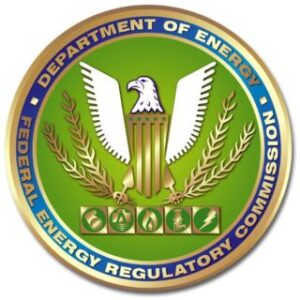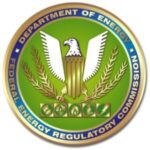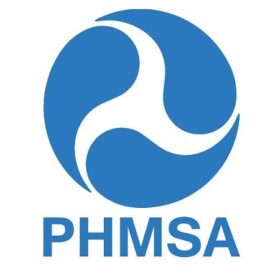
The Commission’s financial forms perform an important function by providing the Commission and the industry with a snapshot of the financial position of an interstate pipeline during the reporting period. As they are currently designed, preparation of the forms does not require pipelines to engage in projections or to make judgment calls based on the data but rather focuses on reporting what has actually occurred, based on the Commission’s Uniform System of Accounts (USOA), 18 CFR § 201. Thus, information such as plant investment, capital expenditures, operation and maintenance expenses, and administrative and general account balances are reported on Form 2. INGAA urges the Commission to retain this focus on objective historical reporting.
As a means or tool for monitoring pipeline rates, the forms already provide enough information to determine when further investigation is warranted. There is no need to compel all of the information that might be useful to other agencies, to the public, or to a litigant in its case in chief challenging pipeline rates that previously have been found by the Commission to be just and reasonable. INGAA agrees with the Edison Electric Institute’s comment to the effect that information such as cost classification, cost allocation, rate design, and billing determinants, which typically only result from a litigated rate, cannot be incorporated into the Form 2 and must come from other sources. EEI Comments at 8. Enabling shippers “to calculate rates based on information contained in Form 2” (see, e.g., Industry Coalition comments at 5), has never been the purpose of Form 2. Such a calculation could not be done for any pipeline except for the simplest of systems. In short, INGAA agrees with EEI (id. at 9) that the Commission should not, by imposing substantial new reporting requirements, invite rates cases to be litigated through the filing of financial forms.
That is not to say that the Commission may not have need for additional data from time to time. But that need can be met through the Commission’s audit authority on an as-needed basis. The Commission’s focus with respect to the annual forms should be on what it needs from every pipeline on a routine basis. The Commission has previously recognized that that cost/benefit analysis is an essential ingredient in weighing the need to collect data, and applied a standard that asks whether “the information to be retained in a reporting requirement [is] essential to the decision-making process at the Commission?” Order No. 121 at 31,447 (emphasis in original).
In addition, while not foreclosing the possibility that a need for certain additional data or reformation of the forms might be demonstrated through the comments, INGAA showed that the information currently reported appears to be sufficient for informing the Commission and the public if there is a need for further investigation of a pipeline’s rates under NGA section 5. Thus INGAA pointed to two recent cases where the Commission relied on Form 2 and Form 2-A data to find sufficient cause to investigate pipeline rates under section 5. Public Serv. Comm’n v. National Fuel Gas Supply Corp., 115 FERC ¶ 61,299, on reconsideration, 115 FERC ¶ 61,368 (2006) (“National Fuel”) and Panhandle Complainants v. Southwest Gas Storage Co., 117 FERC ¶ 61,318 (2006) (“Southwest Storage”). INGAA Comments at 5. INGAA pointed to other examples of Commission reliance on Form 2 data in earlier cases, and other cases where Form 2 data supplied the basis for settlements that foreclosed any arguable need for section 5 rate proceedings and thus avoided the expense and time required for hearing and litigation procedures.Id. at 5-6. See also NYPSC Comments at 2 (“NYPSC has found Forms 1 and 2 to be extremely valuable in evaluating the just and reasonableness of FERC-jurisdictional rates, including assessing whether companies doing business in New York have been in an over-earning position.”).
INGAA also pointed to other data sources through which pipeline information is available to the public. For example, certain Commission reporting requirements that require pipelines to publish on their websites a customer index (which includes billing determinant and affiliate transaction information and identifies contracts with negotiated rates) and transactional reports of newly executed contracts, available capacity and discounts awarded. Negotiated rate contract information is filed prior to its effectiveness and is available either through the tariff or filing of the contract itself with the Commission. Information is also available through forms, reports and filings made with various state regulatory agencies, as well as with the Securities and Exchange Commission.
In sum, the Commission’s experience demonstrates that the information already available through Form 2 and the other periodic forms filed by pipelines, as well as the additional information that the Commission requires be made available by a pipeline on its website and elsewhere, is sufficient to provide the Commission and the public with representative data necessary to evaluate a pipeline’s rate levels and determine whether further investigation under section 5 is warranted. The Commission should take care that an expanded Form 2 does not function as the forum for ongoing disputes over rates, or unlawfully blur the distinction between sections 4 and 5, and effectively shift the burden of proof established under section 5. See Public Serv. Comm’n v. FERC, 866 F. 2d 487, 490-91 (D.C. Cir. 1989).
Finally, if the Commission ultimately determines that additional substantive information is necessary, the Commission should proceed by notice and comment rulemaking. That would be consistent with the Administrative Procedure Act (APA), 5 U.S.C. §§ 553(b), (c), and the Commission’s prior practice.







